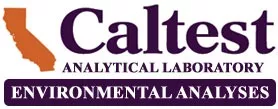Introduction to Methyl Mercury Analysis
The following presentation is an adaptation of the PowerPoint presentation we have presented at various California Water Environment Association (CWEA) meetings. During this presentation we provided an introduction into the EPA draft method 1630 for methyl mercury in waters.
BASIS FOR MOST METHYL MERCURY ANALYSIS
EPA draft Method 1630 for methyl mercury analysis is a very sensitive technique using an atomic fluorescence detector for sub nanogram per liter quantitation of methyl mercury in waters. Most all environmental methyl mercury analyses is a variation on the same theme demonstrated in the EPA draft method
- EPA Draft method 1630 is not promulgated, explaining why multiple variations are performed.
- Many lab’s approach similar, but different enough that their own SOP is referenced rather than the EPA 1630 method itself. Example is in the CAL-FED Mercury Project QAAP, App. D List of Methods is individual lab SOPs renamed.
SIMILARITY OF THE METHODS
Distillation, ethylation, purge and trap, GC separation and atomic fluorescence detection.
BLEND OF FAMILIAR PROCESSES
- Wet Chemistry: Distillation, pH adjustment, ethylation standard.
- Volatiles Purge and Trap: sparging ethylated sample, capturing analyte on carbon trap, heating trap to elute the analyte into a GC column for separation of peaks.
- Metals: convert vapor to inorganic form and detect on atomic fluorescence detector.
METHOD OF ANALYSIS
- Distillation of the sample
- Distillation required to separate the analytes from interferants.
- Distillation is pH critical.
- Distillation requires attention to flow rates of carrier gas, temperature of distillation and iced receiver vials.
- Ethylation of the distillate
- Ethylation of mercury using tetraethyl borate.
- Sparging / Purging of the ethylated distillate onto a carbon trap.
- Mercury vapor is trapped on the carbon.
- Desorbing / Eluting the mercury out of the trap with heat and gas flow into the GC column.
- Separation in GC column.
- Mercury vapor heated in pyrolytic column
- Converting organic mercury to inorganic mercury for detection.
- Mercury vapor carried to atomic fluorescence detector.
- Very sensitive
- Species are identified by retention time and elution order.
METHOD ISSUES
- Method technique critical.
- Dedicated equipment throughout process required.
- Multiple ‘critical’ areas that can affect analyses.
- Distillation rate and pH.
- Ethylation agent quality, freshness and slurry.
- Scrupulously clean glassware.
- Temperature of the desorption coil.
- Condition of the trap and column.
- Lamp stability
LOTS OF RUNS PER REPORTABLE SAMPLE
- 4 calibration blanks.
- 3 method blanks.
- 5-6 point initial calibration.
- Calibration verification, OPR.
- LCS, LCSD every batch of 20 samples.
- MS, MSD every 10 samples etc.
- 37 traps analyzed for first 10 samples reported, 51 traps for 20 samples.
QUANTIFICATION
- Based on five point calibration curve.
- Low standard of initial calibration becomes the reporting limit.
- Quantification of detects below the lowest calibration standard and above the MDL (‘J’ flagged data) is semi-quantitative of undefined quality.
RECOVERIES
- Last 30 LCS averaged 95% recovery.
- Low Calibration point usually in the 95% range.
Questions about methyl mercury analysis at Caltest? Contact us at 707-258-4000 or email at info@caltestlabs.com.
